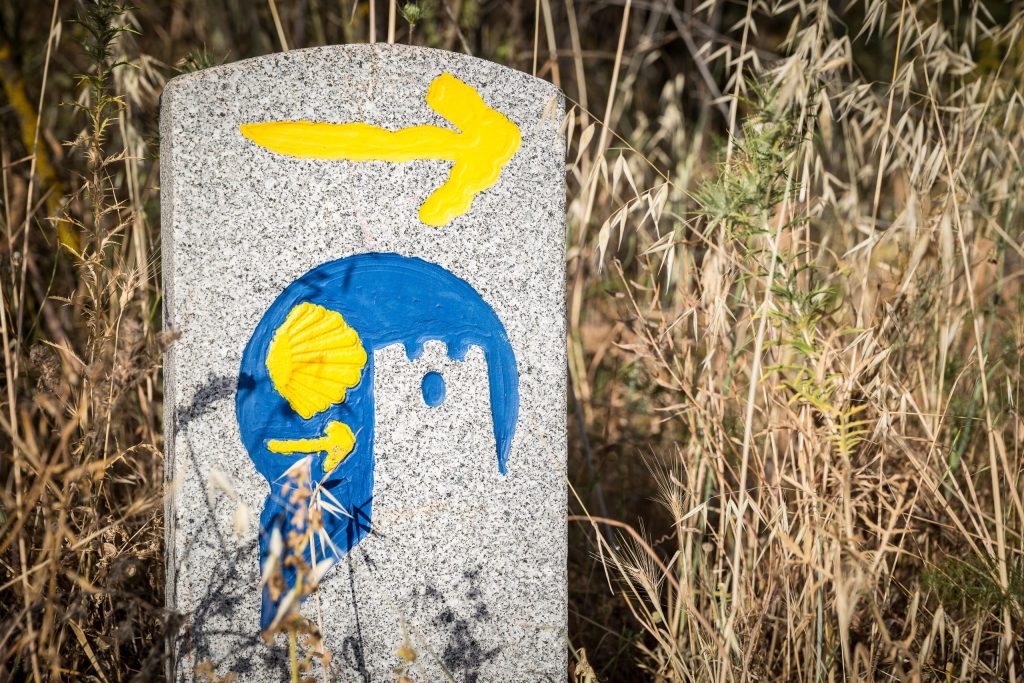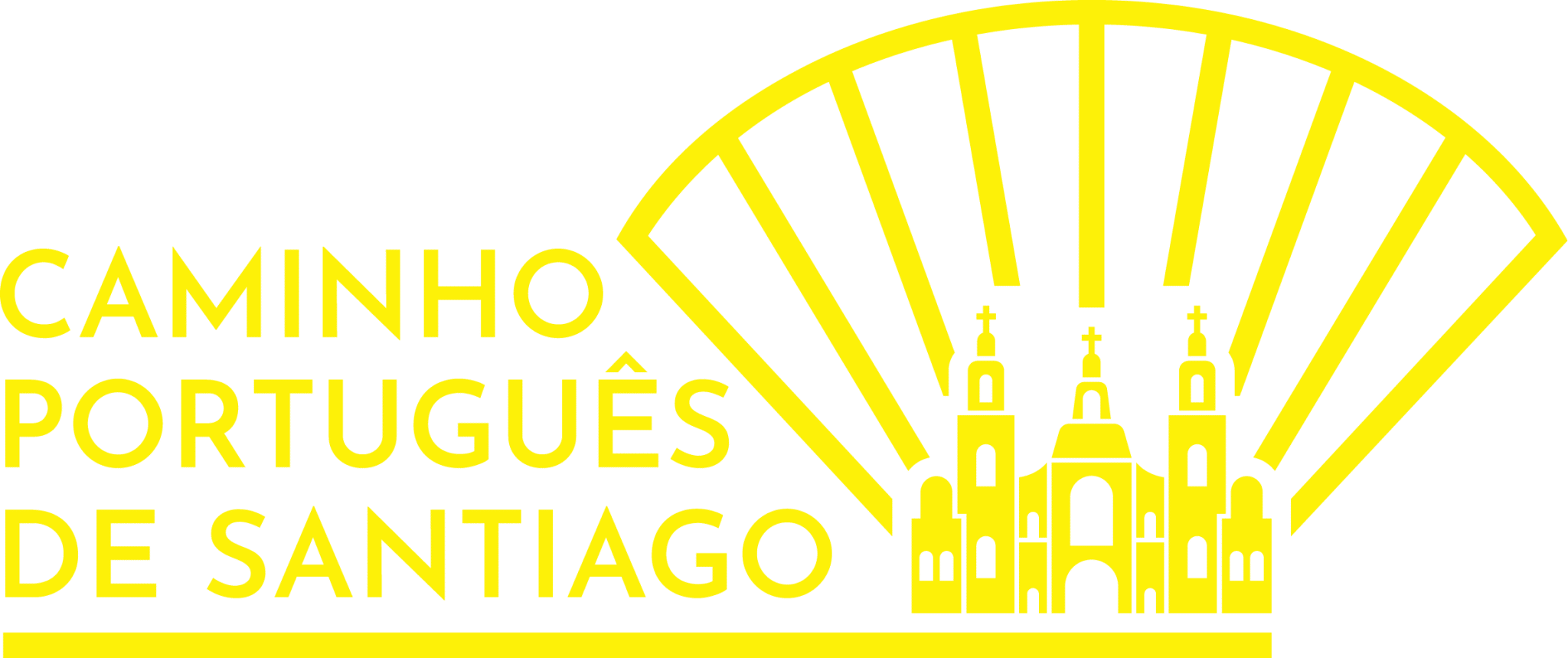The Camino de Santiago has a long history and is therefore full of little details around every corner, well-hidden secrets and, of course, curiosities. In this article, we’ll tell you 10 of the most interesting curiosities about the Way. Stay with us to find out which is the oldest route and other facts!
The curiosities about the Way to Santiago are endless. Today we’ve picked out a few that will make you want to grab your sneakers and start exploring this trail as soon as possible. For example:
1) The Primitive Way is the oldest of all.
Even the name gives a clue to its ancient origins. The first of the many routes of this trail that began in the 9th century after Christ. It was walked by what is thought to be the original pilgrim, Alfonso II the Castro, to find out if the remains found were really those of Jesus’ disciple.
Whether legend or truth, this is where the capital of Galicia is located: Santiago de Compostela. To learn more about the history of our favorite route, read here.
2) The first published guide to the Camino de Santiago comes from the 12th century.
The book, “Iter pro peregrinis ad Compostellam”, is part of a larger writing on the influence of Santiago, homilies and accounts of the miracles of Jesus’ disciple: the Codex Calixtinus.
The fifth chapter of this is, as the name suggests, a way of supporting pilgrims to the Galician capital, with descriptions, advice and even descriptions of the customs of the lands through which the pilgrimage passed.
Although the official sources are unable to pin down a single author, it is known to have been written by a 12th century walker. This is because all the suggestions denote a thorough knowledge of the route.
Although the original is preserved, one of the curiosities about the Camino de Santiago is related to the journey of this document over the last decades. On July 5, 2011, it was announced that it had been stolen from the Cathedral in the Plaza del Obradoiro. However, in just 1 year, it was found in a nearby garage. It had been stolen by a former cathedral employee and his family.
3) In the hostels, those who walk have priority over other means of transportation.
This is a curiosity about the Way to Santiago and a warning at the same time. As a matter of temporal justice, since they always walk slower than a bicycle or other means of transportation, people on foot have priority in public hostels.
So if you are planning to come on a bicycle, you need to pay attention to this detail. You can always arrive first, however, it is not guaranteed that you can stay in a hostel of your choice. The same goes for other forms of transportation, such as horseback riding. Which brings us to the next curiosity.
4) Yes, it is possible to do the Way to Santiago on a horse.
You may have already noticed that your pilgrim credential has a few options when asked how you completed the Way. One of them is on a Horse!
Although this is one of the least common ways to make the pilgrimage to Praça do Obradoiro, with only 300 people doing it this way every year, it is possible to do it.
If you’re thinking of riding this four-legged transport, you have to realize that both you and your equine partner have to be in shape. The route is difficult for both of you, but if you don’t know how to ride, or do it badly, it’s best to ask a specialized company for help.
Your companion, like you, must carry the necessary documentation. In addition, you must notify the authorities to enter the city with the animal one day in advance.
5) How far do I need to walk to receive the compostela?
The compostela is the document that officially certifies that you have completed the Way to Santiago. However, to get it, you must have traveled at least 100 kilometers on foot or horseback, 150 on bicycle, or 100 nautical miles on boat.
This is also the reason why so many people decide to start the Portuguese way between Valença and Tui. To prove your passage, you only need to stamp your pilgrim’s credential twice a day.
6) The village of Ayegui has a wine fountain.
In this small village on the French Way, the monks had the tradition of welcoming pilgrims with wine. The pilgrims, who arrived tired and weak, accepted this comfort with the best of wills.
To honor this shared history, the company Irache created in the 1990s a fountain that, instead of giving water, gives wine. This works daily from 8am to 8pm and has the capacity to share 100 liters of this nectar daily.
If you can’t pass through this village, you have access to this surveillance camera that is always on to protect the pilgrims and allow others to see this interesting curiosity about the way to Santiago.
7) The Church of Rates has a central role in the Portuguese Way to Santiago.
Legend has it that Pedro de Rates, the first bishop of Braga, was killed for trying to convert the population to Christianity. It is also the site of the first hostel in the Portuguese region, before all the others started their businesses.
Converted to Catholicism by Santiago on his pilgrimage through what is now the Iberian Peninsula, Pedro is one of the 7 to be ordained by the person who gives the Way its name. Spreading the word of Jesus, he was commissioned by the father of a young girl who suffered from a deadly desease. St. Peter achieves the miracle of saving her, however, she converted to Christianity. The father, who did not expect such an outcome, vows revenge and pursues the bishop. Although he hides in Rates, Peter has been found and murdered. He was buried in a small chapel in the town and was later found and taken to Braga.
This is why Rates is so important to the Portuguese Way to Santiago. It was also here that the first Hostel in Portugal of the modern era was built. If you want to stay here, save this link for your next pilgrimage!
8) There are 3 Certified Santiago roads in Portugal.
Although there are several routes to Santiago in Portugal, only three of them are certified by the Portuguese state: the Way by the Coast, the Central Way and the Interior Way. However, there are many others such as the Way to Torres or the Way by the Sea.
Certification is a bureaucratic process. Thus, it is necessary to collect proof of its historical importance, always proven with adequate sources and that pilgrims pass through there recurrently.
Despite efforts by public decision-makers, some deserving routes still lack certification for safe pilgrim use.
However, the news are encouraging, as there is more and more openness in new ways of doing tourism. Recently some businessmen took some tourists across by boat, from Vila Real de Santo António to Galicia. Always with the support of the presidency of the republic. Read more about this adventure, here!
9) Not all paths are World Heritage.
Although there are an almost infinite number of Ways to Santiago scattered around the globe, only 2 are World Heritage Sites. The French and the North. Other classics, such as our Portuguese and English, have not yet been accepted by this international organization.
The first to be named was the French route, for being the best known and most important throughout history. According to the UN institution, it was an important route in the cultural exchanges between the Iberian Peninsula and the rest of Europe. From this partnership, cities were born, businesses developed, and thousands of stories were created.
Over the years, thanks to the popularity of this route, it is hoped that others will also be designated, as they should, World Heritage Sites.
10) Don’t get confused with the two “0” kilometers.
Although the Galician capital gives the route its name, it is not the end of the road. Or, at least, it doesn’t have to be. This is because Finisterra also has a milestone with kilometer 0.
This comes from a tradition that predates the very concept of Christianity and, therefore, the Way to Santiago. Before, people used to make pilgrimages to this place known as, “the end of the world,” because they believed that here day and night were united into one at sunset.
It was at this very moment that believers prayed and made offerings to the gods they believed in.

Do you want to know more curiosities about the Way to Santiago?
Throughout our website, you can find articles on the topic, interviews with past pilgrims, and the stages to plan your route step by step. You can also join our Facebook community, where you can ask questions other walkers, share moments and miss your favorite route.
Get to know us at: Caminho Português de Santiago | Facebook
